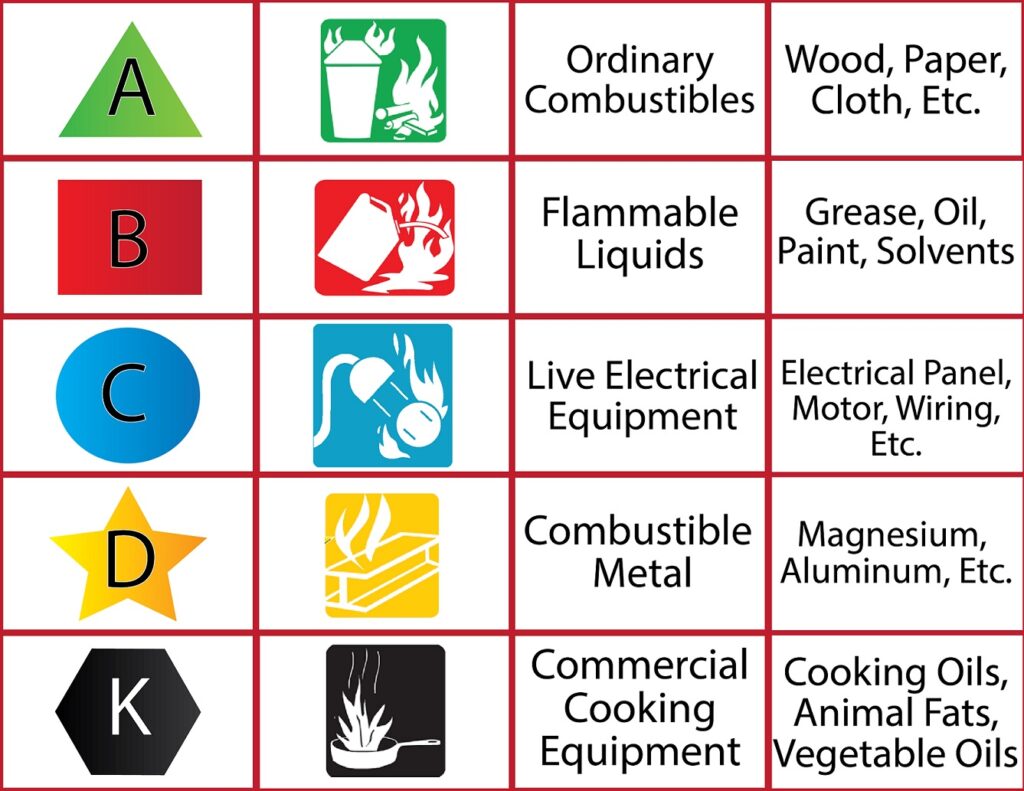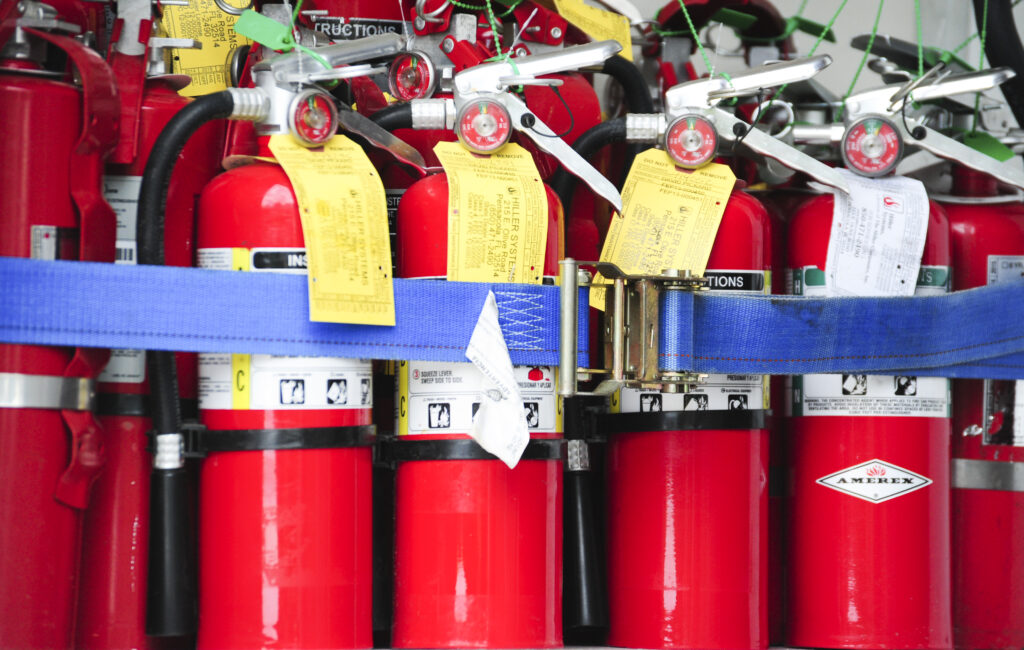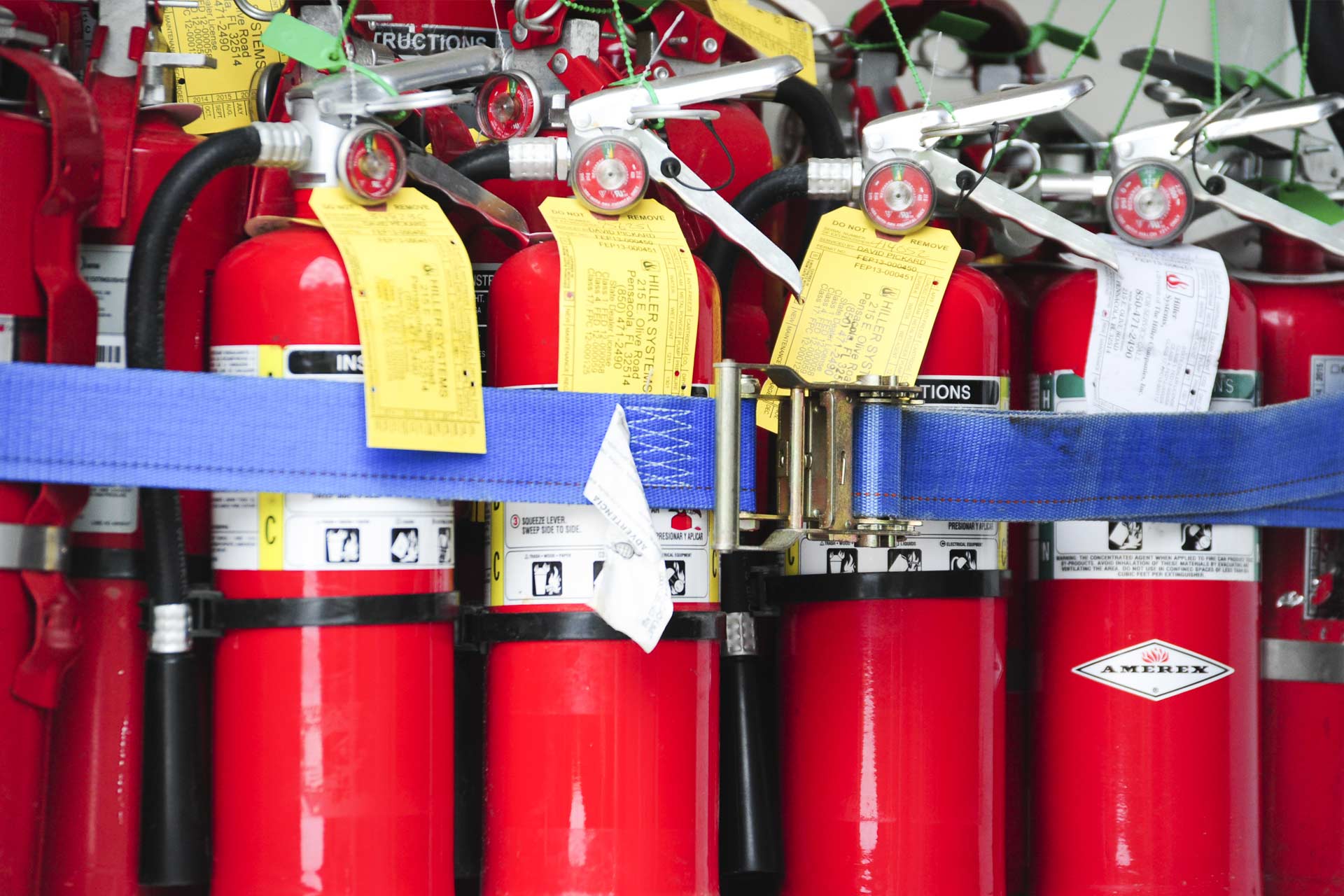Fires can break out unexpectedly and can cause a lot of damage if not put out quickly. Having a fire extinguisher can help you control the situation until the fire department arrives. However, not all fire extinguishers are created equal. Each type is designed to put out a specific type of fire. Understanding what the symbols on a fire extinguisher indicate is essential to choosing the right type of extinguisher for the right application.
Per NFPA 10 Standard for Portable Fire Extinguishers:
“Annex B Recommended Markings to Indicate Extinguisher Suitability According to Class of Fire
This annex is not a part of the requirements of this NFPA document but is included for informational purposes only.
B.1 General.
B.1.1 Markings should be applied by decals that are durable and resistant to color fading (see Figure B.1.1). The color separation identification for the markings is as follows:
(1) Picture symbol objects are white.
(2) Background borders are white.
(3) Background for “YES” symbols is blue.
(4) Background for symbols with slash mark (“NO”) is black.
(5) Class of fire letters and wording is black.
(6) Slash mark for black background symbols is red.
B.1.2 Markings should be located on the front of the fire extinguisher shell. Size and form should permit easy legibility at a distance of 3 ft (1 m). The labels shown in Figure B.1.1 are consistent with fire extinguishers that have been tested and listed in accordance with fire test standards. (See 5.4.1.3.)
B.1.3 Where markings are applied to wall panels, and so forth, in the vicinity of fire extinguishers, they should permit easy legibility at a distance of 15 ft (4.6 m).
B.2 Recommended Marking System.
B.2.1 The recommended marking system is a pictorial concept that combines the uses and nonuses of fire extinguishers on a single label. (See Figure B.1.1.)
B.2.2 Letter-shaped symbol markings, as previously recommended, are shown in Figure B.2.2. Note that fire extinguishers suitable for more than one class of fire were identified by multiple symbols placed in a horizontal sequence”
University of Texas Austin Fire Prevention Services provides this infographic of figures B2.1 and B2.2

Here are the different types of fire extinguishers you should know about:
Water fire extinguishers
Water fire extinguishers are used to put out Class A fires, which involve common combustibles such as paper, wood, and cloth. These extinguishers are filled with water and pressurized with air. They work by cooling the fuel and removing the heat element from the fire. Water fire extinguishers should not be used on electrical fires or fires involving flammable liquids. A loaded stream water fire extinguisher.
CO2 fire extinguishers
CO2 fire extinguishers are used to put out Class B and electrical fires. They contain carbon dioxide gas that displaces oxygen, suffocating the fire. CO2 fire extinguishers are also effective on Class A fires, but they are not recommended for use in confined spaces as the gas can displace the air and cause asphyxiation.
Powder fire extinguishers
Powder fire extinguishers are used to put out Class A, Class B, and Class C fires, which involve flammable gases such as propane and butane. They contain a dry powder that smothers the fire, interrupting the chemical reaction between fuel and oxygen. Powder fire extinguishers

Classes of Fire Extinguishers
Fire extinguishers are an essential piece of safety equipment in any workplace or home. They are designed to extinguish fires before they become too large to control and prevent them from causing damage to property and potentially causing injuries or fatalities. Fire extinguishers come in a variety of classes, each designed to handle different types of fires. Using the fire extinguisher symbols allows the user to react quickly and appropriately to extinguish a fire.
Class A Fire Extinguishers
Class A fire extinguishers are designed to put out fires that involve ordinary combustibles, such as wood, paper, cloth, and plastic. These types of fires typically occur in homes, offices, and other similar settings. Class A fire extinguishers contain water or a water-based extinguishing agent and are often found in a red container.
Class B Fire Extinguishers
Class B fire extinguishers are designed to extinguish fires involving flammable liquids, such as gasoline, oil, and grease. These types of fires are often found in garages, kitchens, and other locations where flammable liquids are stored or used. Class B fire extinguishers contain a foam or powder-based extinguishing agent and are usually found in a blue container.
Class C Fire Extinguishers
Class C fire extinguishers are designed to put out fires involving electrical equipment, such as computers, televisions, and other electronics. These types of fires can be particularly dangerous because water-based extinguishing agents can conduct electricity and cause electrocution. Class C fire extinguishers contain a dry chemical extinguishing agent and are often found in a red container with a blue stripe.
Class D Fire Extinguishers
Class D fire extinguishers are designed to extinguish fires involving flammable metals, such as magnesium, titanium, and sodium. These types of fires are rare but can be particularly dangerous because they can burn at extremely high temperatures and release toxic gases. Class D fire extinguishers contain a dry powder extinguishing agent and are often found in a yellow container.
Class K Fire Extinguishers
Class K fire extinguishers are designed to extinguish fires involving cooking oils and fats, which are commonly found in commercial kitchens. These types of fires can be particularly difficult to extinguish because water-based extinguishing agents can cause the oil to spread, making the fire worse. Class K fire extinguishers contain a wet chemical extinguishing agent and are often found in a silver container.
Fire extinguishers are an essential piece of safety equipment that can help prevent fires from causing damage or injury. It is important to choose the right type of fire extinguisher for your specific needs and to ensure that it is properly maintained and ready to use in case of an emergency. Remember to follow the PASS method when using a fire extinguisher:
- Pull the pin,
- Aim at the base of the fire,
- Squeeze the trigger,
- Sweep from side to side.
Hiller works with top Fire Extinguisher Brands such as Amerex, Ansul, and Kidde to help you comply with Fire Extinguisher Code.
